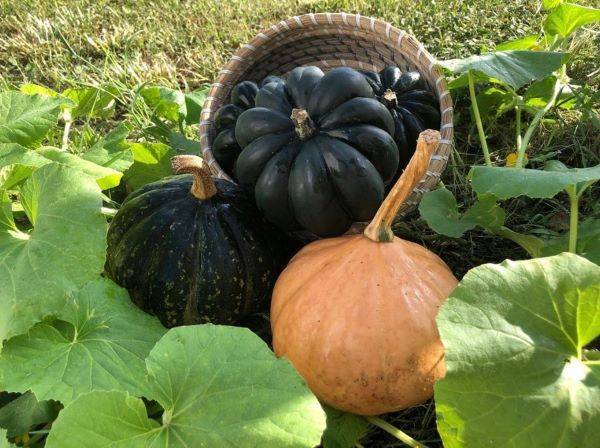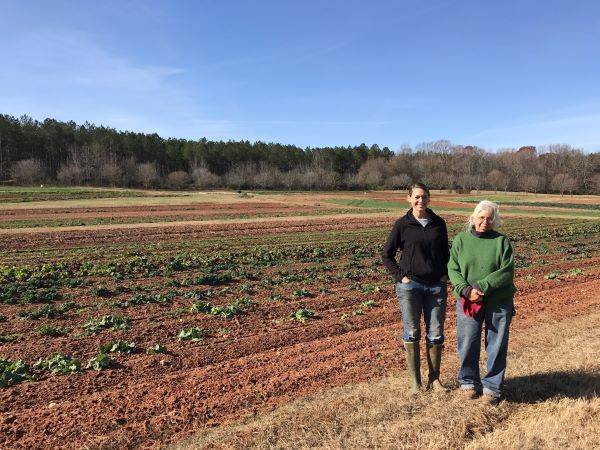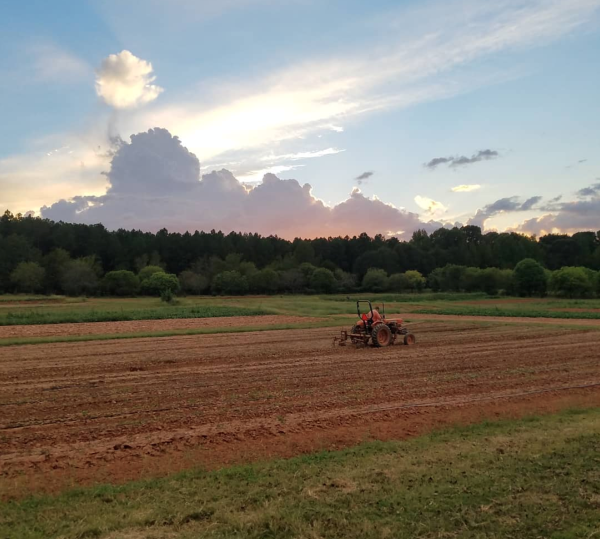Welcome to the October Word from the Warehouse, the monthly newsletter from GrowFood Carolina, where you can find out what is happening in our warehouse, learn more about one of the 100 growers we work with, and hear about how our work supports the mission of the Coastal Conservation League.
As always, please also feel free to reach out to me with feedback and ideas on how to make Word from the Warehouse better.

What’s in season?
Late summer crops are winding down as the fall season’s harvest is beginning to take off. We are experiencing a wonderful seasonal overlap that not many regions of the country get to enjoy. Here in theLowcountry we still get to delight in warm-weather seasonal abundance like peppers, tomatoes and okra while watching the first fall greens, radishes, sweet potatoes, and citrus varieties roll in. What a pleasure!
And what would fall be without pumpkins? Traditional pumpkin varieties are native to the northeastern region of North America and early colonists were first introduced to pumpkins by Native American tribes in New England. While pumpkins were an early part of colonists’ diets, pumpkin carving did not begin until the 1800s when Irish immigrants brought the tradition over. In Europe, carving turnips or beets toscare away evil spirits was a common practice. Once in the United States, immigrants discovered it was much easier to carve pumpkins instead. Enter the modern-day jack-o’-lantern.
Although pumpkins are native to our country, traditional pumpkin varieties can be difficult to grow in South Carolina due to insect pressures that can often kill the plants before they can produce any fruit. So, in the South, we have our own southern pumpkin, which thrives here.
The Seminole pumpkin, which we have in the warehouse, is a southern heirloom variety, which means that it is well-adapted to our soil and hot summers. They’re known by farmers as one of the most tasty and reliable varieties to grow in South Carolina.
The pumpkin is named after the Seminoles of Florida, who cultivated the plants in the Everglades. While the plant is native to Florida—and can be found growing wild in parts of the Everglades—it likely traveled with native tribes around the Southeast and made its way up to South Carolina.
And we sure are glad it did! I encourage you to try this sweet and flaky treat this season!

Featured Farmer
One farm in South Carolina growing the tasty Seminole pumpkin is Crescent Farm in Clinton, a rural community nestled in the heart of the Upstate. Crescent Farm is USDA Certified Organic and run by Margie Levine and her daughter and son-in-law, Holly and Jon Welch.
Margie moved to Clinton about eight years ago to be closer to Holly, Jon, and her grandchildren. When an opportunity arose to take over a leased six-acre farm, Margie, Holly, and Jon jumped at the opportunity.
Margie had previously worked on the largest certified organic farm in Vermont, and has been involved in farming in some fashion for most of her life. In fact, Margie remembers planting her first tomato at theage of five and being “pretty impressed” with the results. Her love of farming only grew from there. As Margie put it, “It’s what made me feel the most useful.”
Margie knows being a woman farmer in South Carolina is unusual, and she is proud of the work she and her daughter do, but she also stressed that Crescent Farm is a family operation, and Jon is an integral part of the team. Holly and Jon, who are both foresters by day, pull their share of the workload in the evenings and on the weekends. They are also working to get a farm on a piece of land they own up and running, too.
Margie, Holly, and Jon decided to try their hand at growing Seminole pumpkins a few years ago because they enjoy growing produce that has regional roots and that is, of course, delicious. Margie remembers being intrigued by the pumpkin’s rich history and the unique way that Native Americans grew the plant. Southeastern Native Americans were known to plant the pumpkins at the base of trees, which would allow the vine to run up the length of the tree and the pumpkins to hang like lanterns in the branches.
Choosing to grow an heirloom variety like the Seminole pumpkin, which is already adapted to our climate, diseases, and pests, was an easy choice. This variety doesn’t require chemical pesticides, which is ideal for an organic operation like Crescent Farm that wants to protect and promote healthy soil.

Conservation Connection
Margie, Holly, and Jon are committed to being good stewards and “making the land better every day,” which is one of the reasons they continue to get USDA Certified Organic every year.
Organic farming requires farmers to grow produce without the use of chemical pesticides, fertilizers, and herbicides. This means they are building healthy soil, combatting erosion, and preventing chemical runoff into nearby waterways.
While the paperwork and extra expenses can be challenging, the Crescent Farm team feels good knowing that it is enriching the land and producing top quality products. And at GrowFood, we feel good about supporting local farmers who care about environmentally sustainable practices as much as we do. Being certified organic is important because the certification guarantees that organic practices are being followed with verification, inspection, and record keeping.
The extra time and effort needed to grow organically means that the farmer must sell products at a higher price to make ends meet. So, creating a market for these premium products is important, and, luckily, GrowFood has no trouble selling these delicious, organic products, like Seminole pumpkins. This delightful heirloom pumpkin practically sells itself with its flavor, and we are so happy to be able to share this variety and story with our community.
